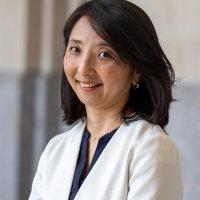
A blog of the Indo-Pacific Program
Shared interests in pushing back against China and protecting advanced technologies have drawn the United States and Japan closer together in an era of international uncertainty. Meanwhile, they are also experiencing significant change at home. Both countries now have leaders who have opted not to seek reelection amid concerns that they won’t be able to win upcoming contests.
In announcing his decision not to seek reelection, Kishida stated that “it is necessary to clearly demonstrate to citizens that the LDP is changing. The first and most obvious step to show this is for me to step down.” In short, he is following in the footsteps of Biden in making way for new leaders to reinvigorate his party.
Compared to dramatic developments in the US election this summer, pressure for Prime Minister Fumio Kishida to step aside has been more of a steady stream coming from within his own party and policy analysts. While the ruling Liberal Democratic Party prepares for its leadership election in September to be determined by the party faithful, the LDP remains focused on two upcoming nationwide parliamentary elections: the Upper House elections by July 2025 and the looming contest for seats in the more influential Lower House before October 2025.
The LDP remains the most powerful political party in Japan, but its lackluster performance in regional elections in recent months has ultimately shaken confidence in Kishida as the face to attract voters and win elections. Granted, unlike the turning of the public tide against President Joe Biden following his debate with Donald Trump on June 27, there is no single event that led to Kishida’s decision. Rather, continued political scandals, including campaign financing and ties to the Unification Church in particular, have steadily bogged down the LDP over the past two years. At the same time, public confidence in the Japanese economy has become increasingly fragile. The persistent weakness of the Japanese yen has hurt consumers and businesses alike, and recent turmoil in global stock markets has cast a gloom over economic sentiment.
Yet, following his announcement that he will not be seeking reelection, the media has been quick to note Kishida’s achievements during nearly three years in office. The fact that he accomplished what his predecessor Shinzo Abe did not, most notably boosting defense spending and enhancing Japan’s military capabilities, is striking. So too is Japan’s commitment to align with the West to support Ukraine by shifting its policy towards Russia and to improve relations with neighboring South Korea. Kishida’s foreign policy successes may not have been enough to boost his political capital, but a commitment to Japan’s rise as a regional stabilizer which first began in earnest under Abe is expected to continue post-Kishida.
There is, however, no clear line of succession for Kishida even though there is no shortage of strong candidates. Hopefuls include former defense minister Shigeru Ishiba, former foreign and trade minister Toshimitsu Motegi, former foreign minister Kono Taro, and current foreign minister Yoko Kamikawa. While each have their own distinct strengths and policy priorities, all are expected to keep Japan on track by remaining hawkish on China, supporting efforts to defend Ukraine and Taiwan, and advancing relations with the Global South.
Moreover, with the opposition parties remaining weak and fractured, the LDP is expected to remain the single most powerful party in the nation, with the biggest question being whether it can hold onto its seats in the Diet.
Unlike the United States where there will be sharp contrasts between a Democratic and Republican administration at home and abroad, a new leader at Japan’s helm is unlikely to diverge too far from the current trajectory, especially when it comes to foreign policy. Whoever emerges as Japan’s new prime minister, the first major test on the international stage will be how he or she will be able to connect with their counterpart in the United States after November and further cooperation between the two sides. Both countries will have new leaders at a time when the regional order in the Indo-Pacific remains in flux.
The views expressed are the author's alone, and do not represent the views of the U.S. Government or the Wilson Center. Copyright 2024, Indo-Pacific Program. All rights reserved
Author


Indo-Pacific Program
The Indo-Pacific Program promotes policy debate and intellectual discussions on US interests in the Asia-Pacific as well as political, economic, security, and social issues relating to the world’s most populous and economically dynamic region. Read more





